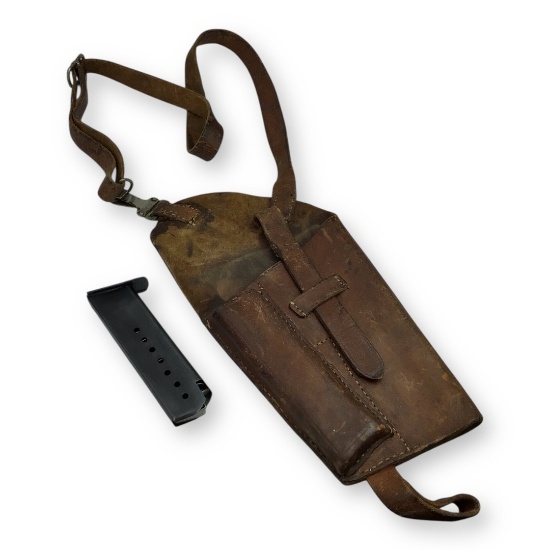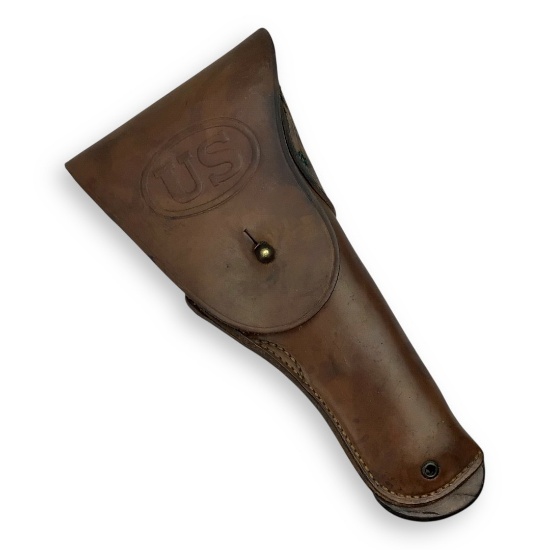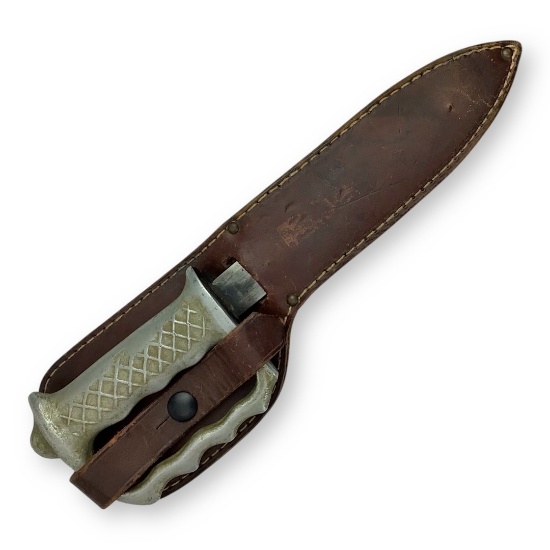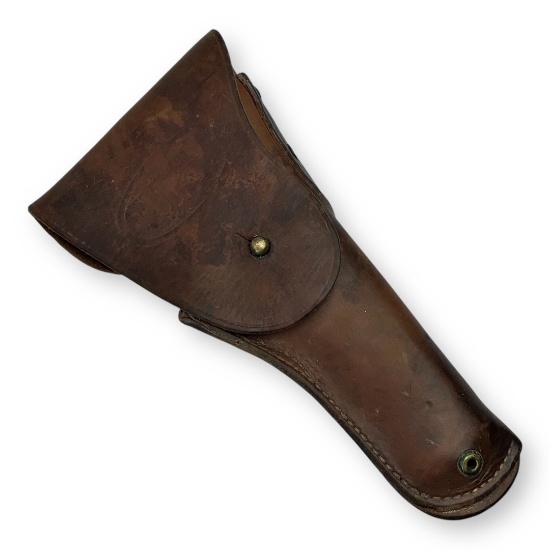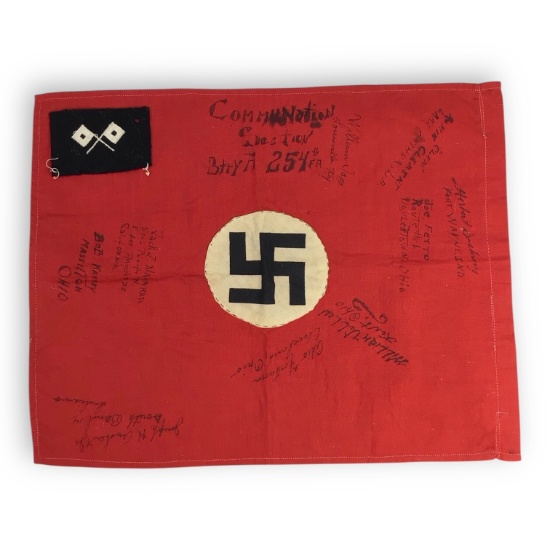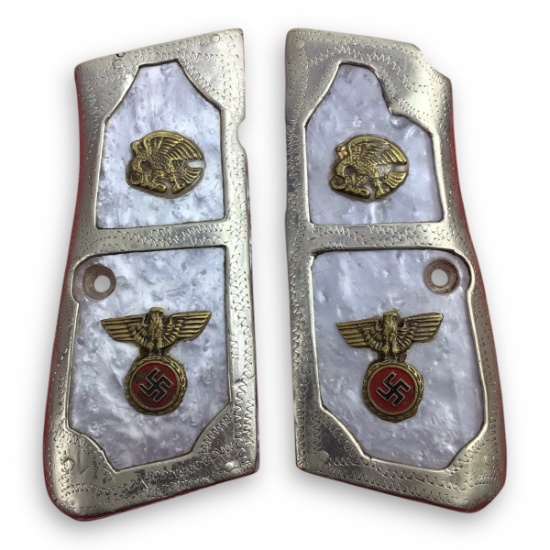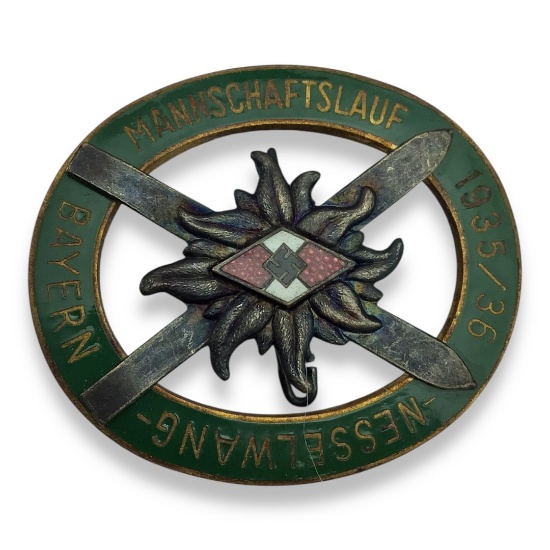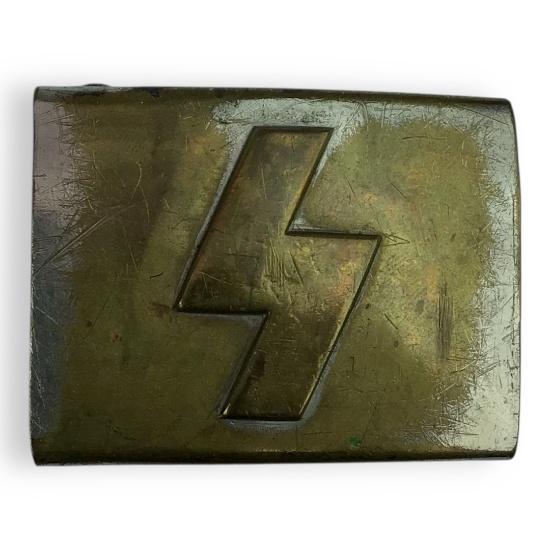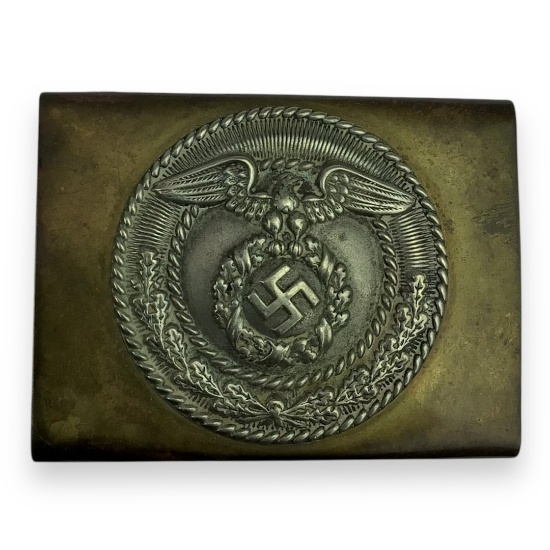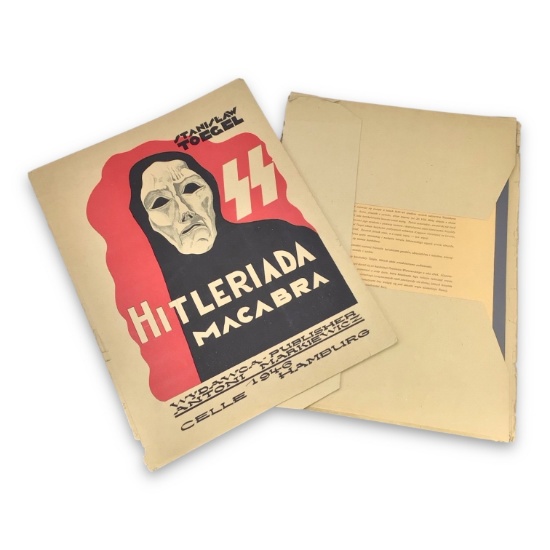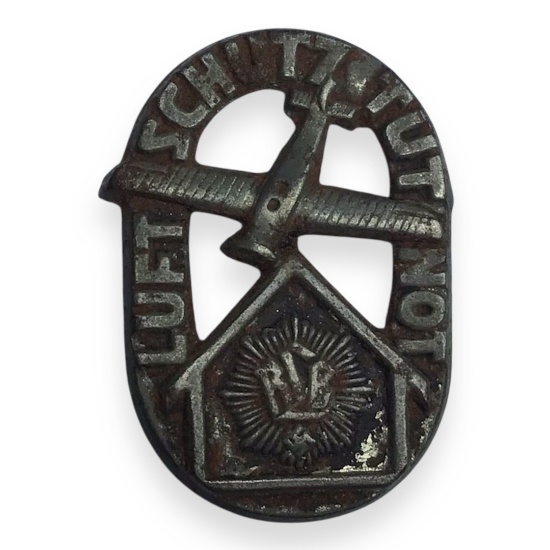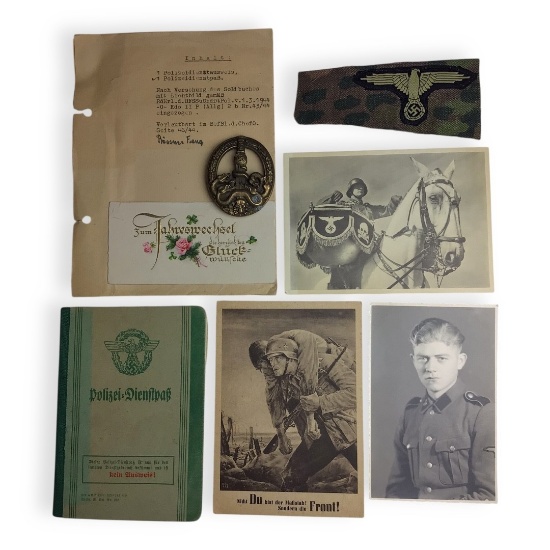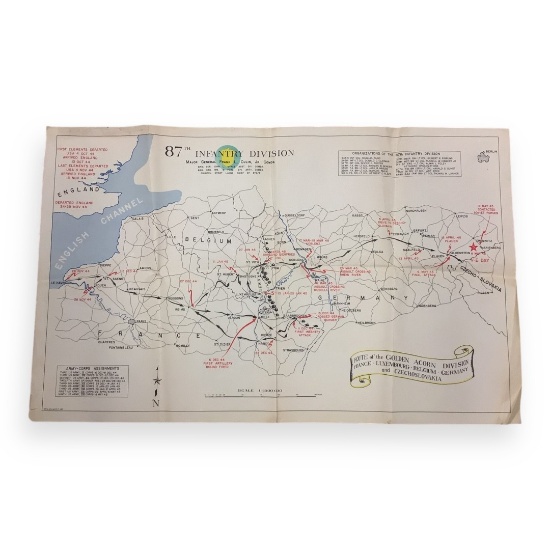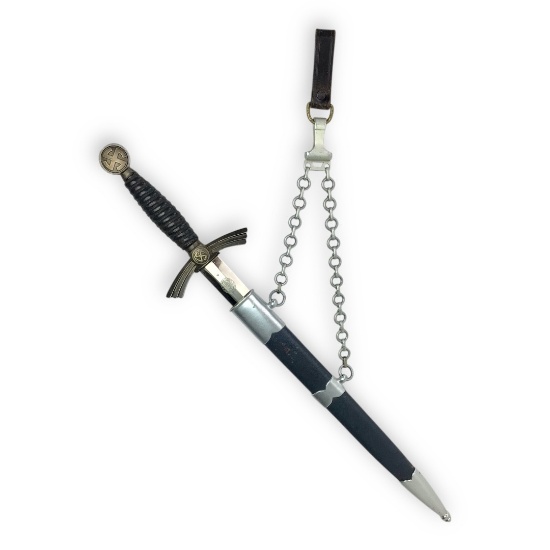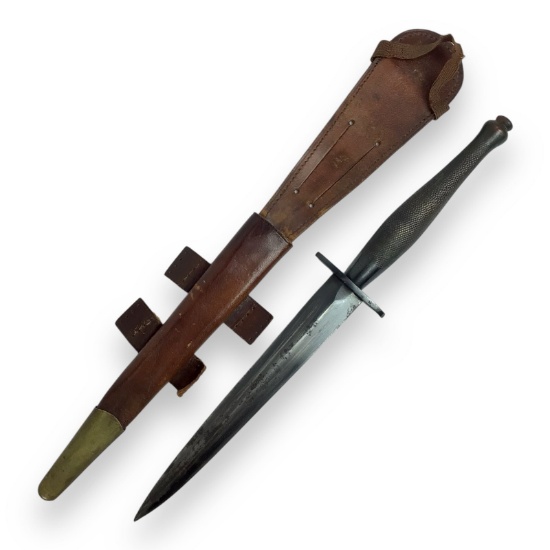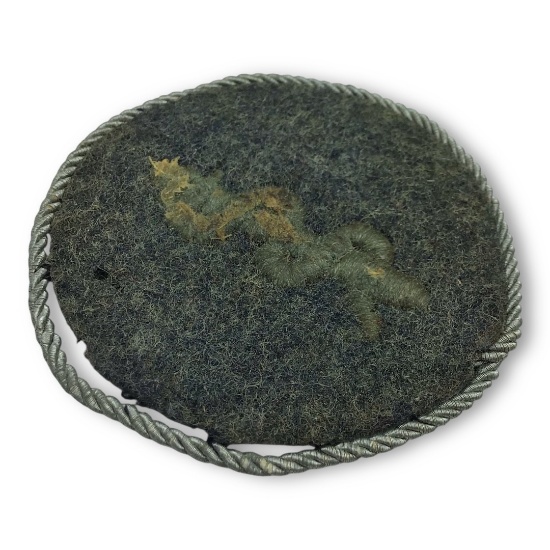
Militaria - Arms & Armor Through the Ages
Militaria - Arms & Armor Through the Ages
See Special Terms for additional fees
Description
German WW2 Luftwaffe M35 SE64 Double Decal Helmet - Original Liner & Chinstrap
Lot # 773 (Sale Order: 226 of 302)
German WW2 Paratrooper Shoulder Holster for P.38 - with Magazine (Vet Bringback)
Lot # 774 (Sale Order: 227 of 302)
U.S. WW2 Leather Pistol Holster - "U.S." Flap, Milwaukee Saddlery Co., 1942
Lot # 775 (Sale Order: 228 of 302)
Stitching remains firm, and the flap's brass stud is intact and functional. The Milwaukee Saddlery Company was one of several contractors supplying sidearm holsters for the U.S. Army during WWII. These holsters were designed to accommodate the M1911 .45 ACP pistol, the standard sidearm for U.S. forces during the war.
This is a fine example of wartime U.S. leatherwork from a respected maker.
Australian or New Zealand WW2 Commando Knuckle Duster Trench Knife - Original Sheath, Vet Bring-Back
Lot # 776 (Sale Order: 229 of 302)
These trench knives were issued to elite ANZAC commandos operating in the Pacific Theater, where brutal close-quarters jungle combat demanded rugged, dual-purpose weapons. The knuckle duster grip offered an edge in silent sentry removal and brutal hand-to-hand encounters.
Rare and highly sought after, especially with provenance as a veteran bring-back, this knife is a key artifact from the Allied special operations legacy of World War II. Provenance: Vet bring-back
U.S. WW2 Leather Pistol Holster - "U.S." Flap, Boyt 1944 - Vet Bringback
Lot # 777 (Sale Order: 230 of 302)
Boyt was one of the premier military leather goods suppliers throughout WWII, producing everything from holsters to scabbards and web gear. This holster was designed for the M1911 pistol and saw use across multiple theaters-from Europe to the Pacific.
As a veteran bringback, this example likely accompanied a serviceman through deployment and was retained as a personal memento after the war. Clean and well-preserved WWII holsters with named maker marks remain highly collectible-especially when verified as field-used or part of returning soldier groupings.
U.S. WWII Leather Pistol Holster - "U.S." Flap, Boyt 1940 with Non-Regulation Brass Stud - Vet Bring
Lot # 778 (Sale Order: 231 of 302)
Boyt's 1940 holsters are among the earliest full-production runs for WWII contracts-issued to U.S. Army and Marine Corps personnel prior to America's full-scale entry into the war. This example may have seen duty in pre-1942 deployments or early Pacific campaigns. The custom brass stud suggests soldier-level adaptation, a common practice in field conditions.
Provenance: A veteran bringback.
German WW2 Krim Shield with Framed Award Document - Named Presentation
Lot # 779 (Sale Order: 232 of 302)
German WW2 Lappland Shield - Framed with Named Award Document
Lot # 780 (Sale Order: 233 of 302)
Signed NAZI Flag - James William "Dub" Beagg US Army
Lot # 781 (Sale Order: 234 of 302)
German WW2 Rare Mexican Presentation Pistol Grips - Mother-of-Pearl with NSDAP & Mexican Eagle Emble
Lot # 782 (Sale Order: 235 of 302)
German WW2 Hitler Jugend Ski Badge Mannschaftslauf 1935-36- Nesselwang-Bayern
Lot # 783 (Sale Order: 236 of 302)
German WW2 Deutsche Jungvolk Belt Buckle - RZM Marked MA 45
Lot # 784 (Sale Order: 237 of 302)
The Deutsche Jungvolk was the entry-level tier of the Hitler Youth and played a key role in Nazi indoctrination of children. Boys in the organization underwent paramilitary training, political education, and physical conditioning, all designed to prepare them for eventual entry into the Hitler Youth proper. Buckles like this one were an essential part of the uniform and represent a sobering symbol of how thoroughly the Nazi regime infiltrated youth culture in Germany, turning even simple items like belt buckles into tools of ideological reinforcement.
German WW2 Sturmabteilung (SA) Belt Buckle
Lot # 785 (Sale Order: 238 of 302)
Hitleriada Macabra (1946) - Stanisław Toegel Rare Anti-Nazi Satire Artwork
Lot # 786 (Sale Order: 239 of 302)
German RLB Luftschutz Tut Not Tinnie
Lot # 787 (Sale Order: 240 of 302)
German WW2 Gold Bandit Warfare Badge with Documents
Lot # 788 (Sale Order: 241 of 302)
U.S. WW2 Rare 87th Infantry Division Route Map
Lot # 789 (Sale Order: 242 of 302)
WW2 Panzer Assault Badge & WW2 GERMAN THIRD REICH KRIEGSMARINE U-BOAT BADGE
Lot # 790 (Sale Order: 243 of 302)
Rare German WW2 Luftwaffe Officer's 1st Model Dagger - Alcosa-Marked with Full Rig
Lot # 791 (Sale Order: 244 of 302)
The First Model Luftwaffe dagger was introduced in 1934 as an update to the DLV (Deutscher Luftsport Verband) officer's sidearm, worn by members of the secretive Fliegerschaft before the Luftwaffe's formal unveiling in 1935. These early daggers were symbols of prestige, awarded to commissioned officers and pilot-licensed personnel. While the design changed in 1937, the First Model remained an iconic representation of early Luftwaffe ambition and its roots in Germany's aviation resurgence under Goring's command.
This example shows only light handling wear, with some toning to the silver fittings and minor leather rub to the grip. 100% authentic, it was brought home by a U.S. serviceman and represents an incredibly fine and complete example of an early Luftwaffe dress weapon!
German WW2 NSKK Enlisted Dagger by Gebr?¬der Heller (Anchor Logo)
Lot # 792 (Sale Order: 245 of 302)
English WW2 Army Fairbairn-Sykes Commando Knife with Sheath
Lot # 793 (Sale Order: 246 of 302)
German WW2 EM/NCO Luftwaffe Belt Buckle
Lot # 794 (Sale Order: 247 of 302)
German WW2 Kriegsmarine Naval Officer's Dagger by WKC - Rare Hammered Scabbard Variant
Lot # 795 (Sale Order: 248 of 302)
German WW2 SS Medical Personnel Patch - Samuel Presley Nesmith Jr. Collection
Lot # 796 (Sale Order: 249 of 302)
German WW2 EM/NCO Heer Army Aluminum Belt Buckle - Vet Bring-Back
Lot # 797 (Sale Order: 250 of 302)
The phrase ""Gott Mit Uns"" echoed a long-standing militaristic tradition, while the incorporation of Nazi symbology reflected the regime's effort to fuse military authority with political dogma. This piece not only reflects the daily wear of millions of German soldiers but also represents the broader mobilization of nationalism and totalitarian control in Nazi Germany. Vet bring-backs like this were commonly preserved as war trophies, encapsulating personal narratives of World War II service and victory.


 x Cancel
x Cancel
